Cost of Baby Supplies Per Year Average Cost to Set Up a Nursery
Children are wonderful and they fulfill our lives in ways nothing else could.
But the truth is that babies come with expenses that, if not budgeted for, can cause a severe strain on the family's income.
This guide will show you exactly how much it costs to have a baby in 2022.
You can also use your interactive baby cost calculator to figure out what you're likely to spend during your baby's first year based on your situation.
- Baby Cost Calculator
- The Rising Cost of Having a Child
- Giving Birth Expenses
- One-Time Baby Expenses
- Ongoing Baby Expenses
- Approximate First Year Baby Cost
- Tips for Cutting Costs
Baby Cost Calculator
Grand Total: $0
Giving Birth: $0
Choose one of the following birth options. You can adjust the estimated cost if you already have an idea of what you will be paying.
| Item with average price | Estimated cost | |
|---|---|---|
| Vaginal birth with health insurance ($4,884 – $10,681) | $ | |
| C-section birth with health insurance ($7,404 – $14,927) | $ | |
| Vaginal birth without health insurance ($9,013 – $19,775) | $ | |
| C-section birth without health insurance ($12,593 – $28,491) | $ | |
| Home birth (No less than $2,908) | $ | |
| Birth center ($3,000 – $4,000) | $ |
Grand Total: $0
One-time Expenses for the First Year: $0
We've checked first-year items we think you'll probably need, based on what most first-time parents buy. You can make adjustments to fit your own needs and how much you expect to spend.
Nursery: $0
| Item with average price | Estimated cost | |
|---|---|---|
| Crib ($120 – $850) | $ | |
| Crib mattress ($60 – $140) | $ | |
| Mattress pad ($14 – $130) | $ | |
| Bassinet ($50 – $260) | $ | |
| Changing table ($80 – $250) | $ | |
| Bedding and blankets ($24 – $190) | $ | |
| Baby monitor ($40 – $60) | $ | |
| Co-sleeper ($130 – $200) | $ | |
| Hamper ($20 – $60) | $ | |
| Glider or rocker ($189 – $600) | $ | |
| Mobile ($20 – $55) | $ | |
| Nightlight ($24 – $70) | $ | |
| Dresser ($80 – $500) | $ | |
| Decorations ($10 – $150) | $ |
Breastfeeding: $0
| Item with average price | Estimated cost | |
|---|---|---|
| Electric breast pump ($30 – $325) | $ | |
| Milk storage bags ($6 – $20) | $ | |
| Breast pads ($9 – $27) | $ | |
| Nipple cream ($14 – $30) | $ | |
| Manual breast pump ($12 – $39) | $ | |
| Nipple shells ($9 – $26) | $ | |
| Nipple shields ($6 – $60) | $ | |
| Ice packs ($6 – $22) | $ | |
| Nursing bras ($18 – $50) | $ | |
| Nursing covers ($12 – $28) | $ | |
| Nursing pillows ($10 – $40) | $ |
Feeding: $0
| Item with average price | Estimated cost | |
|---|---|---|
| Bottles and nipples ($6 – $60) | $ | |
| Highchair ($60 – $250) | $ | |
| Sterilizer ($38 – $250) | $ | |
| Plates, spoons, and bowls ($10) | $ | |
| Cups and sippy cups ($21) | $ | |
| Burp cloths ($10) | $ | |
| Bibs ($12) | $ | |
| Bottle brush ($8) | $ |
Bath and Grooming: $0
| Item with average price | Estimated cost | |
|---|---|---|
| Hooded baby towel ($16) | $ | |
| Baby washcloths ($10) | $ | |
| Bath mat ($6 – $50) | $ | |
| Bathtub ($15 – $20) | $ | |
| Brush and comb ($8) | $ | |
| Nasal aspirator ($5 – $50) | $ | |
| Nail clippers ($5 – $15) | $ |
Others: $0
| Item with average price | Estimated cost | |
|---|---|---|
| Pacifiers ($8) | $ | |
| Thermometer ($13 – $85) | $ | |
| Babyproofing supplies ($43 – $50) | $ | |
| Diaper pail ($25) | $ | |
| Baby wipes ($) | $ | |
| Humidifier ($29 – $69) | $ | |
| Photo sessions and photo printing ($127) | $ |
Transportation: $0
| Item with average price | Estimated cost | |
|---|---|---|
| Car seat ($60 – $150) | $ | |
| Stroller ($70 – $900) | $ | |
| Travel crib ($40 – $300) | $ | |
| Car mirror ($10 – $60) | $ | |
| Baby carrier/sling wrap ($29 – $60) | $ |
Grand Total: $0
Ongoing Expenses for the First Year: $0
We've checked the on-going expenses based on what most parents need. You can make adjustments or enter your own custom amounts.
Childcare: $0
| Item with average price | Estimated cost | |
|---|---|---|
| Occasional baby sitter ($475 per month) | $ | |
| I won't be paying for childcare ($0) | $ | |
| Live-in nanny ($2680 per month) | $ | |
| Live-out nanny ($3064 per month) | $ | |
| Daycare center ($921 per month) | $ | |
| Family daycare ($765 per month) | $ | |
| Custom ($ per month) | $ |
Diapers: $0
| Item with average price | Estimated cost | |
|---|---|---|
| Disposable diapers ($750 per year) | $ | |
| Disposable wipes ($240 per year) | $ | |
| Cloth diapers ($200 per year) | $ | |
| Cloth diaper service ($1200 per year) | $ | |
| Custom ($ per year) | $ |
Formula: $0
| Item with average price | Estimated cost | |
|---|---|---|
| I plan to breastfeed (cost calculated above) | $ | |
| Formula feeding ($1800 per year) | $ | |
| Custom ($ per year) | $ |
Clothing: $0
| Item with average price | Estimated cost | |
|---|---|---|
| New clothes ($600 per year) | $ | |
| Second-hand clothes ($200 per year) | $ | |
| Custom ($ per year) | $ |
Health: $0
| Item with average price | Estimated cost | |
|---|---|---|
| Health insurance ($420 – $780 per year) | $ | |
| No health insurance ($0) | $ | |
| Custom ($ per year) | $ |
Toiletries: $0
| Item with average price | Estimated cost | |
|---|---|---|
| Common toiletries ($250 per year) | $ | |
| Custom ($ per year) | $ |
Entertainment: $0
| Item with average price | Estimated cost | |
|---|---|---|
| Books ($138 per year) | $ | |
| Swimming classes ($30 – $174 per class) | $ | |
| Toys ($420 per year) | $ | |
| Custom ($ per year) | $ |
Saving for College: $0
| Item with average price | Estimated cost | |
|---|---|---|
| Custom ($ per year) | $ |
Grand Total: $0
The Rising Cost of Having a Child

CLICK TO EXPAND IMAGE
According to a 2015 report by USDA, middle-income families were likely to spend $233,610 to raise a child from infancy to age 17. Low-income families would spend $175,000, while those with much higher incomes would spend $372,000 (1).
These expenses relate to housing, food, healthcare, child care, clothing, transportation, and education. They don't include pregnancy costs or college fees.
As per the report, where you live makes a difference. The cost of living is much higher in the urban Northeast, urban South, and urban West. Families in the urban Midwest and rural areas would spend much less to raise their children.
Maternity and paternity leave days are key considerations, too. Will you need your partner to stay home for a while to help with the baby? How many unpaid days or weeks off work can you afford?
The Family Medical Leave Act makes provision for up to 12 weeks of unpaid maternity leave. However, this law may depend on the number of employees in the organization and the state you live in.
In most states, the law applies to companies that have over 50 employees. Maine is one of the few that requires a minimum of 15 employees for it to apply. If you live in California, New Jersey, or Rhode Island, you may qualify for paid leave (2).
Find out what provisions your state has made for maternity leave. Additionally, speak to your employer about your maternity leave. Some employers can be pretty flexible and you'll never know what you can get till you ask.
You may also need to think further ahead in terms of child care. Some families opt to have one parent stay at home to look after the baby. While this may seem a lot cheaper, it also means your overall income will reduce.
Single-parent families don't have it easy; they have to not only take responsibility for all parenting duties, but be the sole breadwinner, too. According to the USDA report, 85 percent of single-family households are run by women.
It will be important for you, as a single mom, to explore all your financial options. If possible, seek child support to ease the financial burden.
Giving Birth Expenses
One of the biggest expenses you'll tackle occurs between the prenatal period and delivery. On average prenatal expenses may reach $2,000, covering around 12 doctor's visits, urinalysis, routine blood tests and one ultrasound (3).
Delivery costs are dependant on various factors including:
- Where you live.
- Where you choose to have your baby — in a hospital, at a birth center, or in the comfort of your home.
- Insurance coverage.
- Any pre-existing medical conditions such as diabetes, or high blood pressure.
- Type of birth. Will it be a vaginal birth or cesarean section?
- Possible complications. A vaginal birth that requires surgery following complications can be quite expensive.
Many soon-to-be parents around the country opt for a hospital birth. This is a good choice since you will have ready help in case something goes wrong.
Others prefer to have their babies in the comfort of their home or at a birth center. While birth centers are health care facilities for childbirth, they are not hospitals and deliveries are undertaken by midwives (4).
Birth, by whichever means, comes at a cost:
Childbirth in a hospital with health insurance
- Vaginal birth $4,884.44 – $10,681.28
- C-section birth $7,404.07 – $14,927.76
Childbirth in a hospital without health insurance
- Vaginal birth $9,013.88 – $19,775.79
- C-section birth $12,593.60 – $28,491
*The states of Alabama and Rhode Island feature the lowest costs overall while Alaska and New Jersey the highest. You can check out the costs in your state accordingly.
Childbirth at home
Some insurance companies cover home births, while others don't so you'll need to check with your insurance company first. You may have to pay upfront then seek reimbursement from the company afterward. Additionally, fees applicable will depend on where you live.
- The average cost of hiring a midwife: $2,000 (5).
- Mesh panties: $11.59 for a pack of three.
- Maternity pads: $19.99.
- Plastic shower curtain to contain the mess: $5.06.
- First and second/third ultrasound: $269 and $312 respectively.
- One OB-GYN visit: $291.
On average you will spend no less than $2,908.64.
It's worth noting that the cost of ultrasound varies from one provider to another, from one city to another and from one state to another. The cost of one ultrasound can start at $100 and go as high as $1,000.
Giving birth at a birth center
It will cost anywhere between $3,000 to $4,000. As with home births, there are insurance companies that will cover them and those that won't. It's important to check with them first (6).
Looking at the above figures, it is easy to see how expensive a C-section can be, especially if you don't have insurance. Even in states where hospital costs are low, forking out over $12,000 is no mean feat. Plus, if any complications arise, it'll be even more.
Although home births are the cheapest option, they're not for everyone, making birth centers a viable third option. Compared to hospitals, they're more welcoming and less restrictive. You can even have your family members present during the birthing process.
If you are fortunate to have good health insurance the bulk of the medical costs of birth will be covered for you, or be a small fee.

Editor's Note:
Katelyn Holt RN, BSN, BC
One-Time Baby Expenses
The first year of your baby's life is the one that hits you the hardest. First, you're not used to spending so much money in such a short period. Secondly, your baby actually needs that stuff, so there's no getting around it.
A chunk of this money will go to buying baby furniture and gear which can really dig into your pocket. However, the best thing about these one-time expenses is just that — they're a one-time thing.
Investing in good quality baby gear means these items will last for years and can even be handed down to your second or third baby.
You can get some excellent deals from garage sales or second-hand stores. However, car seats and any other child safety products should be bought brand new.
Safety standards change often and the product you're buying may be outdated. Additionally, you might buy one that's been in an accident or whose parts are worn out.
The prices may fluctuate from time to time, so the figures we provide are rough estimates.
1. Nursery
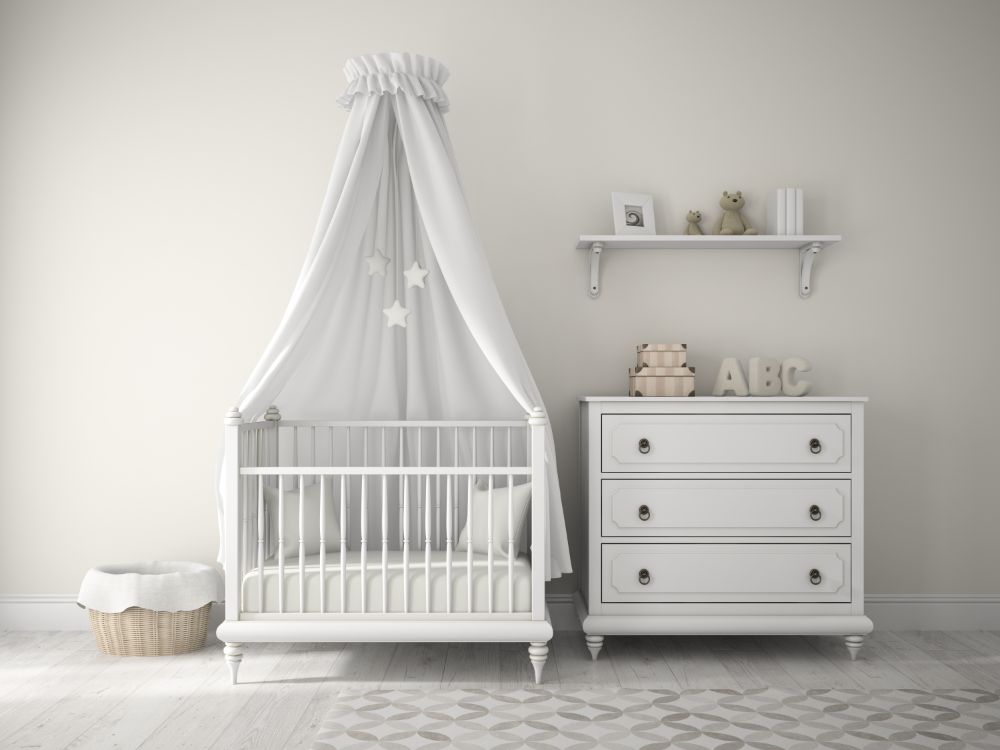
- Crib ($120 – $850): A crib isn't just necessary furniture, it's vital for your baby's safety. It prevents situations where parents roll over and end up hurting or suffocating their babies. Cribs are long-lasting and can be used by your second and third child.
- Crib mattress ($60 – $140): You can't have a crib without a mattress. Look for "firm" options as these will support your baby's growing bones.
- Mattress pad ($14 – $130): Mattress pads are great for preventing liquid spills, urine, and dirt from reaching the mattress. Is one necessary right now? No. Your baby is in diapers and spills may not be common, especially if you're breastfeeding. If you really have to use something, go for waterproof bed sheets.
- Bassinet ($50 – $260): A bassinet is great but not really a necessity especially since your child will outgrow it fast. You can do without one if you already have a crib. In situations where you don't have space for a crib, then a bassinet can be a good option.
- Co-sleeper ($130 – $200): Co-sleepers are great for teaching babies to sleep in their own space. They're not a necessity if you already have a crib or intend to purchase one. As with bassinets, babies also quickly outgrow co-sleepers.
- Hamper ($20 – $60): As your doctor will have mentioned, baby's laundry shouldn't be mixed with yours — you'll need a separate hamper. Rope baskets can be a great substitute and you can find these laundry baskets for less than $20.
- Changing table ($80 – $250): They're cute and give you extra storage space for your baby's things, but they may become risky once your baby starts rolling over. You can use a changing pad instead and change your baby on the bed. A portable changing pad is great for travel or home use as well.
- Glider or rocker ($189 – $600): A rocker provides support for your arms and back as you breastfeed and nurse your baby, or even when you read to them. Is it necessary? Not really, but it's a purchase you won't regret.
- Bedding and blankets ($24 – $190): Bedding and blankets are an absolute necessity for your baby's crib. You can also use them when laying your baby on your bed or on the couch. They're soft and come in beautiful colors and designs to suit different tastes.
- Mobile ($20 – $55): These are great for stimulating the brain and visual development and can help them sleep. Plus they keep baby engaged.
- Nightlight ($24 – $70): Nightlights are important for those late-night diaper changes and feedings. Some baby soothers double up as lights so rather than make separate purchases, buy one that does both.
- Dresser ($80 – $500): Babies require frequent change of clothes and a dresser will be necessary to store all their clothes. To make it more economical, buy one that your child can use when they're older.
- Decorations ($10 – $150): Decorations are cute and they brighten up your baby's room. They're good for stimulating your baby's vision and introducing them to different concepts. Most are pretty cheap and you can even DIY. However, you can add them as time goes by.
- Baby monitor ($40 – $60): The American Academy of Pediatrics recommends that you and your baby sleep in the same room for the first six months of their life, so you won't really need a monitor in the beginning. If your baby sleeps in a different room and you're a deep sleeper then a baby monitor will be necessary.
2. Breastfeeding
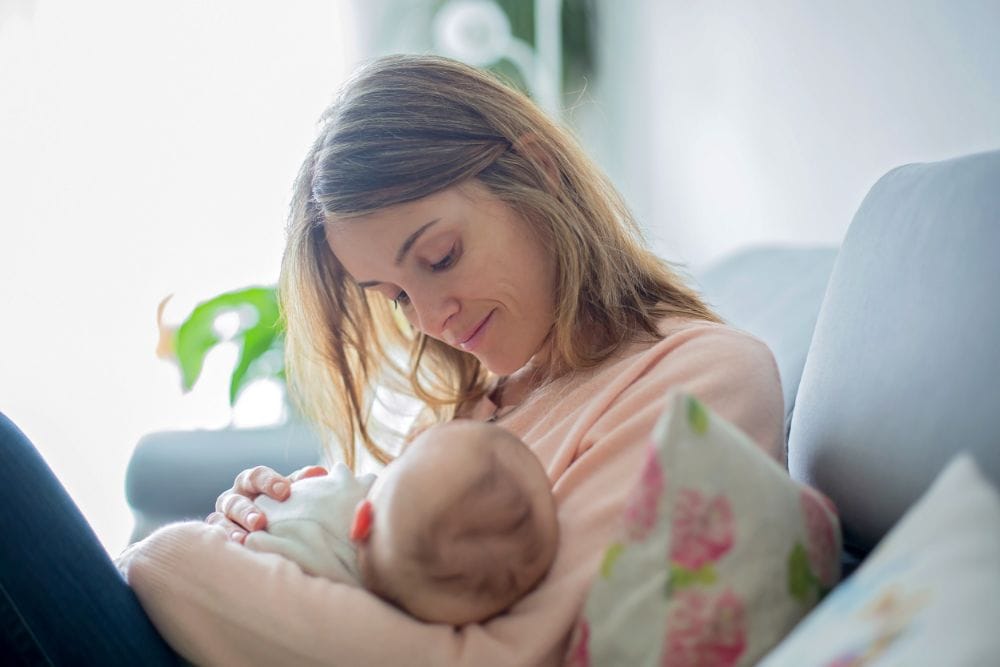
If you have health insurance, you may qualify for a breast pump from your provider at no extra cost. You will, however, need to look at the terms — whether they provide a rental or a brand new one.
Additionally, some insurance companies provide manual pumps while others do electric, so check with them first.
Whether you choose a manual or an electric one a breast pump is necessary for many reasons. It allows you to express breast milk that will be used later and helps relieve engorged breasts.
If you are buying a pump out of pocket, here are some of the figures you'll be looking at, along with other breastfeeding-related expenses:
- Manual breast pump ($12 – $39): Manual pumps are an inexpensive option and come in handy when you have no access to electricity or an electric outlet. The Haaka Manual Pump and NatureBond Breast Pump are great options.
- Electric breast pump ($30 – $325): An electric pump, specifically a double electric pump, works faster than a manual pump. It's less messy and helps extract more milk.
- Milk storage bags ($6 – $20): Now that you have a breast pump, you'll need to store milk. Storage bags are easy to use and will help you know how much your little one is consuming.
- Breast pads ($9 – $27): These are an absolute necessity, especially when you are out and about. They soak up breast milk should your breasts start leaking. You can choose between washable and disposable pads.
- Nipple shells ($9 – $26): Breastfeeding can get messy with the baby nursing on one side and your other breast leaking. A nipple shell, also known as breast shells, can help collect this milk for use later. The shells also help prevent friction between sore nipples and your clothes.
- Nipple shields ($6 – $60): Nipple shields can help with latching problems, flat or inverted nipples as well as sore or cracked nipples. However, they should only be used under direction from your doctor or lactation consultant.
- Ice packs ($6 – $22): Breast milk can last for six hours at room temperature. Unless your schedule involves being away from home for more than five hours, you really don't need an ice pack.
- Nipple cream ($14 – $30): Nipple cream helps relieve cracked, sore, and bleeding nipples. Most women will experience one of these when they start breastfeeding, making a nipple cream a must-have.
- Nursing bras ($18 – $50): Nursing bras are great for supporting your breasts and holding breast pads in place. They are not necessary and you can use an ordinary bra that's stretchy.
- Nursing covers ($12 – $28): If breastfeeding in public makes you uncomfortable, a nursing cover will help keep things more private. Plus, it will help your child concentrate on feeding rather than look at every passing thing.
- Nursing pillows ($10 – $40): A nursing pillow prevents you from leaning into your baby while breastfeeding which can cause back pain. Is it necessary? Not really, many moms get along just fine without it, but your back will thank you for it.
3. Feeding
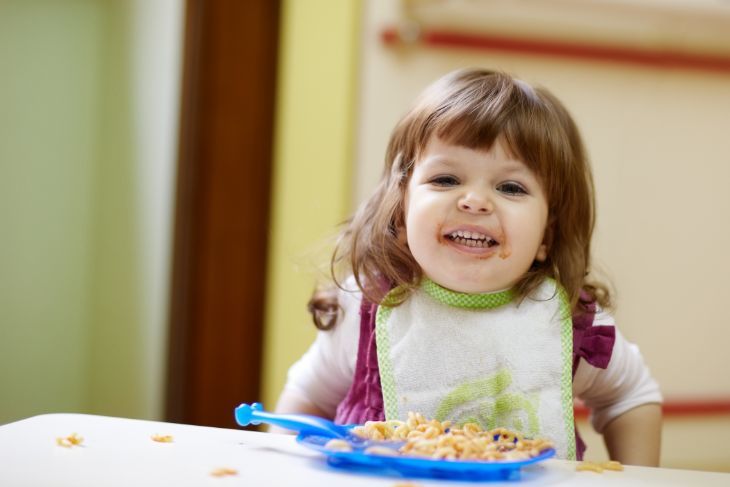
- Bottles and nipples ($6 – $60): Feeding bottles are necessary for breast milk and formula. The price depends on whether you want a plastic, glass, or stainless steel bottle. If your baby doesn't like bottles, you can use a baby bowl and spoon to feed them.
- Highchair ($60 – $250): Highchairs aren't always necessary, but most parents will end up buying one. If you are short on space, you can use a space saver high chair which can be folded and stored when not in use. You can get one for $25 which is less than half the price of a highchair.
- Sterilizer ($38 – $250): Sterilizing your baby's bottles is essential and a sterilizer is ideal for getting this done. If you need a cheaper way to sterilize baby stuff, put them in hot boiling water and air-dry.
- Plates, spoons, and bowls ($10): These will be necessary when you wean your baby, so you can hold off buying them until later.
- Cups and sippy cups ($21): You may need to buy these sooner if your baby refuses to be bottle-fed. Look for easy to clean and non-toxic products.
- Burp cloths ($10 for six): A baby must be burped otherwise they'll get gassy and uncomfortable. A burp cloth will soak up the mess when your baby spits up. Unless you don't mind smelling like spoiled milk, burp cloths are a must-have.
- Bottlebrush ($8 for two): Bottle brushes are designed to reach the bottom of baby bottles and clean them. Since your hands can't go all the way in, you'll need them to ensure the bottles are thoroughly clean.
- Bibs ($12 for 10): Bibs are necessary during feeds. They help to contain the mess and keep the baby dry. Without a bib, milk or food can find its way into your baby's clothes and stain them.
4. Bath and Grooming
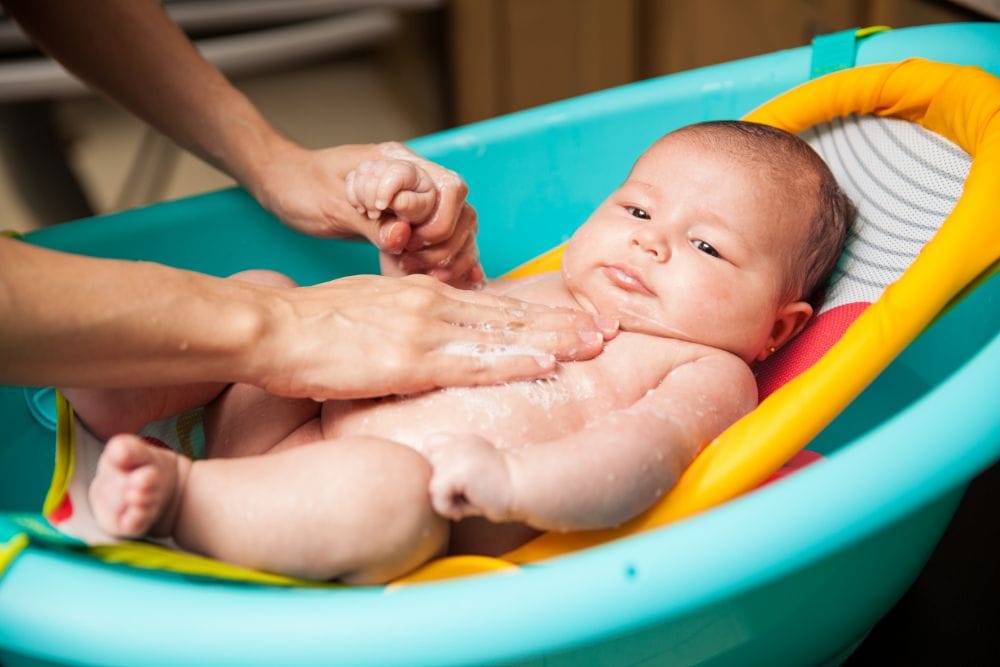
- Hooded baby towel ($16 for two): Babies tend to lose heat faster than adults, so having a good quality towel with a hood will help keep them warm when they come out of the bath. Some parents use normal towels but I'll stick with my hooded one.
- Baby washcloths ($10 for five): Baby washcloths are soft and ideal for washing your baby without hurting or damaging their skin. They are vital for a successful bath.
- Bath mat ($6 – $50): As your baby starts to stand, they'll want to move around. A bath mat can help stabilize and keep them from slipping and falling in the bathroom. You can consider this a necessary item on your shopping list.
- Bathtub ($15 – $20): We mentioned earlier that babies need their items separate from adults, so soaking your baby in an adult's tub is a no-no. You get to choose whether to buy an infant tub now or an older baby tub later. In my opinion, it would be better to buy an older baby's tub as they will use it for a longer period.
- Brush and comb ($8): A brush and comb are necessary for removing stuff that sticks to your baby's hair. Plus it helps disentangle it.
- Nasal aspirator ($5 – $50): A nasal aspirator will help clear your baby's nostrils and makes it easier for them to breathe. That booger sucker is a must-have.
- Nail clippers ($5 – $15): A baby's nails grow at a fast rate and they'll scratch themselves (and you) with these very nails. Having a nail clipper is important.
5. Others
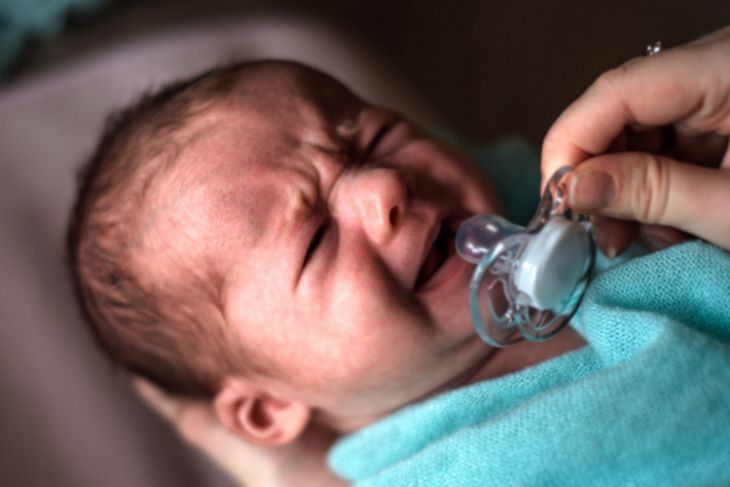
- Pacifiers ($8): Pacifiers can help prevent sudden infant death syndrome (SIDS) and help soothe a fussy baby, among other things (7). Is it necessary? I believe so, but you get to decide. If you choose to buy one, wait till you've established a feeding routine.
- Thermometer ($13 – $85): A thermometer is necessary for checking your baby's temperature especially if you suspect that it's on the rise. Some parents use their hands to feel their baby's temperature but this may give false results.
- Humidifier ($29 – $69): Baby humidifiers add moisture to the air making it easier for your baby to breathe more comfortably. However, you should only use them under instruction from your doctor. Your doctor may suggest other ways to prevent the air from drying out, making humidifiers unnecessary.
- Babyproofing supplies ($43 – $50): These are an absolute must-have especially as your baby begins to crawl and move around. They'll help minimize accidents in your home. Some items you can consider include outlet plugs, cabinet latches, and a baby gate.
- Diaper pail ($25): Babies go through diapers fast and these need to be disposed of often. A diaper pail is great for collecting used diapers and keeping the room odor-free. They're not a necessity and you can always use a regular trash can. However, you may find yourself with a stinky room and you'll need to air it often.
- Photo sessions and photo printing ($127): Taking photos and printing them out is an age-old tradition. They're lovely to have but not a true necessity. Why not take pictures using your smartphone and upload them to an album on Google?
6. Transportation
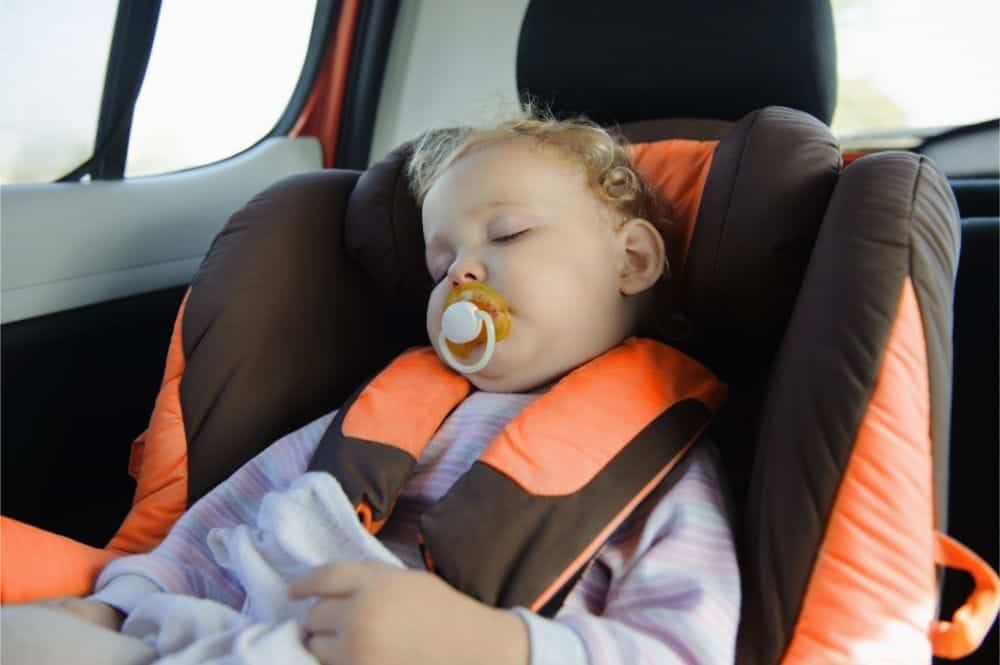
- Car seat ($60 – $150): A car seat is essential when traveling in a car as it helps keep your baby safe.
- Stroller ($70 – $900): A baby stroller makes moving around easy and other family members can help you push it. Your baby will be more comfortable while riding in one. Strollers make the list of transportation necessities.
- Travel crib ($40 – $300): If you travel a lot, you can consider buying a travel crib for your baby to sleep and play in. Since they're much cheaper than actual cribs, you can buy one in place of the crib. Many hotels provide baby cribs, meaning you may not need one.
- Car mirror ($10 – $60): Rear-facing car seats block your view preventing you from seeing how your baby is doing while you're on the road. With a car mirror, you will be able to check up on them without having to pull over. Are they essential? Yes indeed.
- Baby carrier ($29 – $60): Baby carriers or sling wraps are great for bonding and keep your baby close when you're out and about. If you're looking for an inexpensive mode of transportation, do consider purchasing one.
Ongoing Baby Expenses
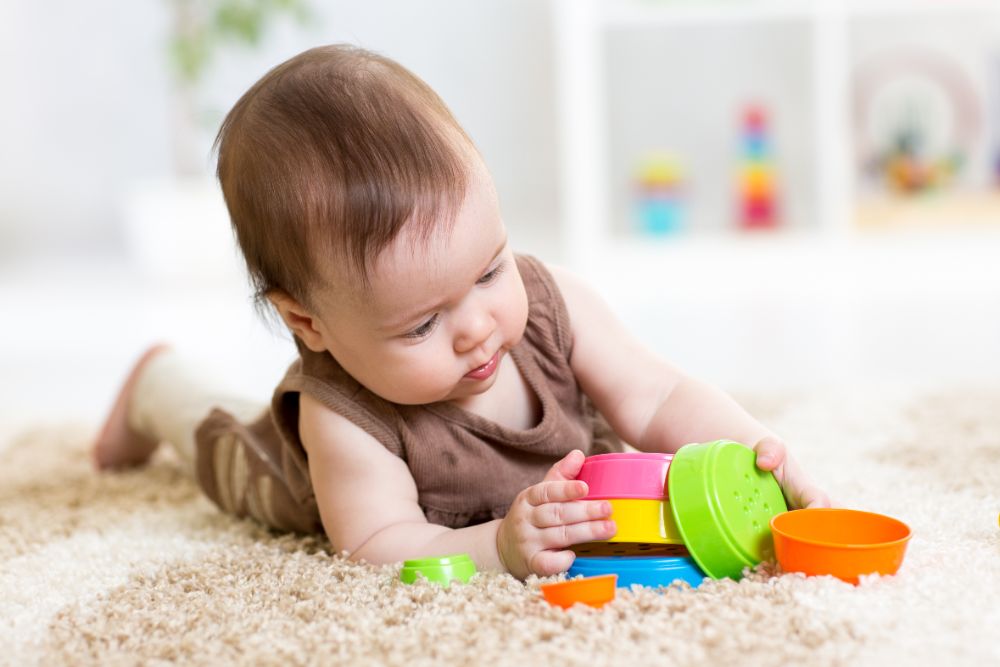
Over and above the one-time expenses, you'll soon realize that some expenses are on-going. Some may be temporary, lasting a couple of months, perhaps a year. Others will run till your child goes off to college.
1. Childcare
You'll need to think about childcare if you're returning to work. If grandma stays close by, or you have a live-in relative, you can leave your baby in their care. If this doesn't apply to you, you'll need to consider other options.
Hiring a live-in nanny will set you back by around $670 a week. A live-out nanny will cost you $766 weekly. Tough.
You may need to look into daycare. This option may be cheaper although the cost will depend on your state and the time spent in daycare. On average you can pay $420 to $1,423 a month or $5,045 to $17,082 a year (8).
2. Diapers
During their first month of life, babies may go through 10 to 12 diapers a day so you are looking at 270 to 300 diapers a month. As they settle into their second month and go on to a year they're likely to use 6 to 8 diapers daily.
You realize soon enough that diapers can get pretty expensive. The type of diapers you use will determine just how much money goes into this expense.
The cost of washable diapers on two major online retailers shows a pack of six cloth diapers going for $19 to $37. If you buy six sets at an average price of $28, you'll spend $168 a year. Even if you add detergents and labor, the overall cost will still be low.
The average monthly cost of disposable diapers is around $62.50 which translates to about $750 a year.
3. Formula
The choice to breastfeed or formula feed is personal and entirely up to you. For this article, we're only looking at the financial implications of each.
Breastfeeding has almost no expense, except that you eat nutritious meals, which you should be doing anyway. Babies on formula consume 2 to 3 ounces during the first weeks of life.
By month two, they'll drink 4 ounces bottle and by six months they'll be doing 6 to 8 ounces (9). The cost of formula milk can go up to around $150 per month or $1,800 a year (10). It's a no brainer — formula milk is definitely more expensive than breastfeeding.
4. Clothing
Whether online or in a baby clothing store, the sight of cute baby clothes can sway you into spending far more than you should.
Looking at major online retailers, you can spend up to $20 on an item of clothing. Designer pieces are costlier, at $70 to $100 a piece. An average spend on clothes is $15 to $50 a month or $180 to $600 a year.
What about secondhand? It's a good budget option and you can find great deals in secondhand stores and online shops. You can check out ThredUp or a local consignment store for deals on secondhand baby clothes.
5. Health
You need to add your baby to your health insurance as soon as they're born. If you or your spouse have health insurance coverage at your workplace, find out if your baby can be added.
If you have a private health plan, the additional premium will vary from one provider to another. You can expect to pay $35 to $65 monthly or $420 to $780 yearly for your baby.
If your employer offers an FSA account, this would be a great time to have it. You can put money directly from your paycheck pre-tax onto the FSA debit card for medical expenses, you can even use it at stores for qualifying purchases.

Editor's Note:
Katelyn Holt RN, BSN, BC
What if you don't have insurance? The government has provided federal-funded medical plans such as Medicaid and CHIP. Eligibility for cover under Medicaid is set at 200 percent of the federal poverty level.
If your income is still modest but higher than the set 200 percent for Medicaid, your child may qualify for Children's Health Insurance Program (CHIP).
While the benefits provided under CHIP will differ from state to state, some of the benefits you can find in your coverage include (11):
- Immunization.
- Emergency services.
- Routine check-ups.
- Dental and vision care.
- Inpatient and outpatient care.
- Prescriptions.
- Lab and X-ray services.
6. Toiletries
Cotton balls, baby oil, shampoo, soap, wipes, and cream … you may find your list of toiletries quite long. Toiletries are essential for bathing and caring for your baby's skin and hair.
As you shop, look for products that don't contain too many additives or fragrances. You can ask your pediatrician to recommend a brand you can use. You can expect to spend at least $21 a month or $252 a year.
7. Entertainment
- Infant swimming classes ($30 – $174): Classes may range from four to 12 sessions. Using an average of $102 for 8 classes, you'll be looking at $816 for all the sessions. Is swimming necessary? Yes, it helps strengthen your baby's muscles, improve coordination and balance as well as their appetite. Plus, you get to bond with your baby.
- Infant massage ($29 – $60 for one hour): If you would like a private appointment, you will pay $120 to $180. Massages are beneficial for your baby but you really don't have to pay for them. There are tons of YouTube videos that can teach you how to get it done.
- Toys ($35): Baby toys are a great way to stimulate your baby's senses, enhance hand-eye coordination and improve their motor skills. They're necessary for your baby's overall development. Annually, you'll be looking at roughly $420.
- Books ($3 – $20): Reading to your baby early on will help your child understand the world around them much faster. They'll also learn and relate words to pictures much sooner. Books are essential for your baby's growth. The annual cost will be around $138. You can opt for cheaper options by purchasing slightly used toys and books.
Saving Tip
Trips to the library are stimulating for your baby and you can borrow lots of books for no cost at all- while you're there you can check out their storytime hours!
8. Saving for College
College is not cheap. The average four-year course cost at a public college is $9,970 for state residents. Out-of-state students pay $25,620, while attending private colleges look at $34,740.
These figures have not factored in living expenses. If you were to factor in these expenses, you would be looking at $25,290, $40,940, and $50,900 respectively. It is in your best interest to start saving now.
As your child grows, talk to them about going to college. Encourage them to start putting some money aside, especially when they take part-time jobs in summer.
Approximate First Year Baby Cost
Looking at the figures mentioned above, we're sure that you have a greater appreciation of the need for financial preparedness. If we were to total all necessary expenses for one year, this is what you may be looking at:
- Hospital delivery costs for a vaginal birth: $7,782.72.
- One time expenses: $1,069.
- Breastfeeding: $306.
- Feeding: $119.
- Bath items: $133.
- Other items: $103.50.
- Transport: $669.50.
- Daycare: $11,063.50.
- Cloth diapers: $168.
- Formula feeding: $1,350.
- Clothes: $420.
- Toiletries: $252.
- Entertainment: $1,374.
The overall cost of raising a child for one year in the United States is $24,642.22. These figures are pretty steep and naturally, you'll want to bring them down. We tackle how to do this in the next section.
Tips for Cutting Costs
We are by no means encouraging you to cut all costs to zero and live like a hermit. Not at all, life is a journey meant for you and your family to enjoy. Here are some cost-cutting tips that you can use:
Cost of Baby Supplies Per Year Average Cost to Set Up a Nursery
Source: https://momlovesbest.com/baby-cost
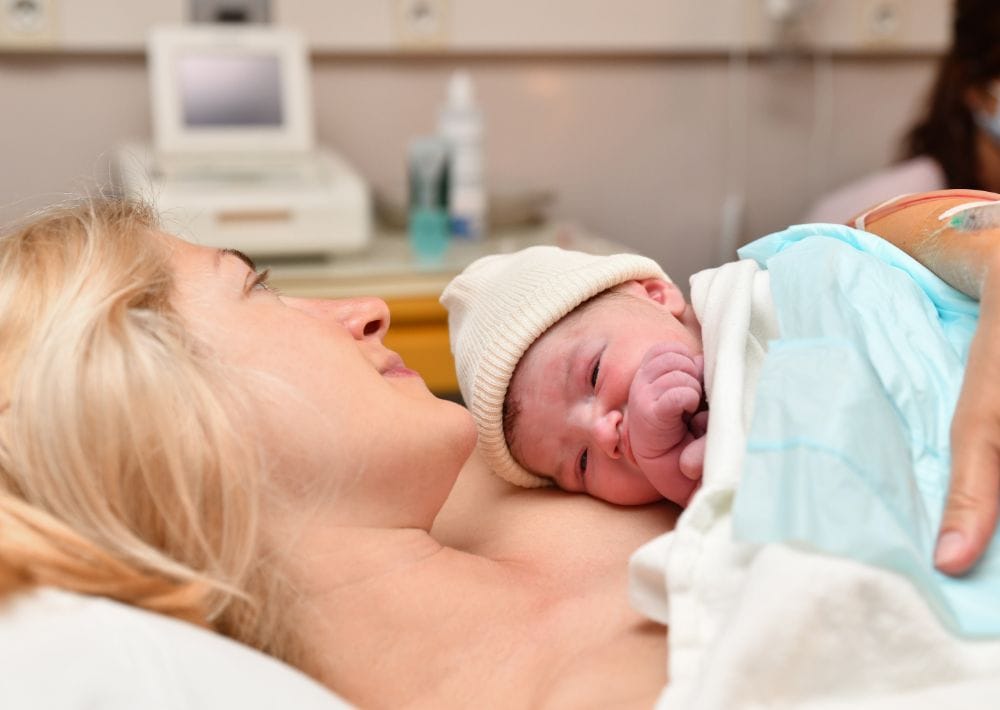
0 Response to "Cost of Baby Supplies Per Year Average Cost to Set Up a Nursery"
Post a Comment